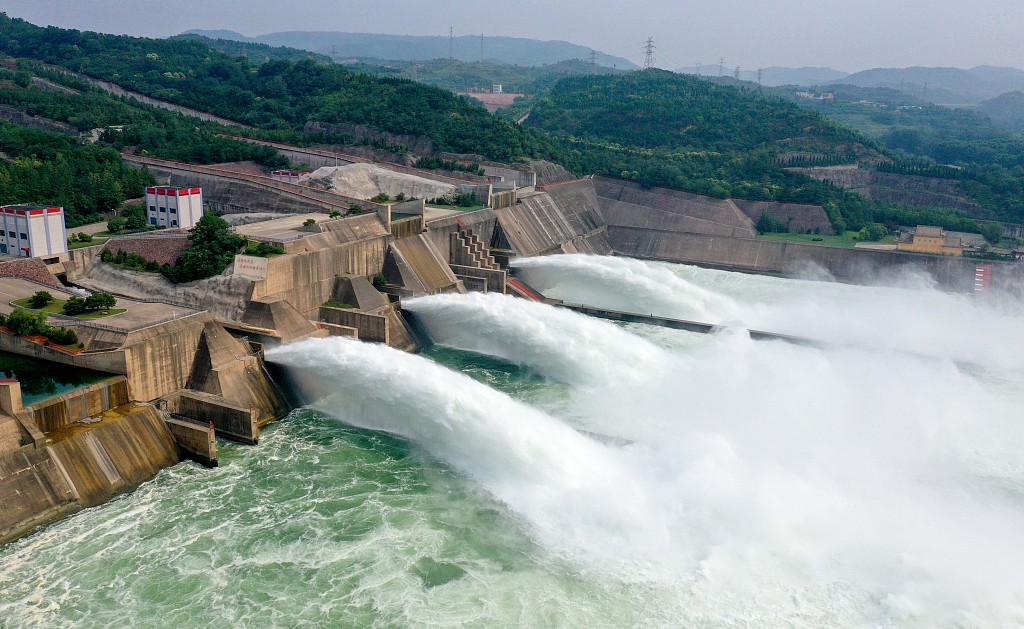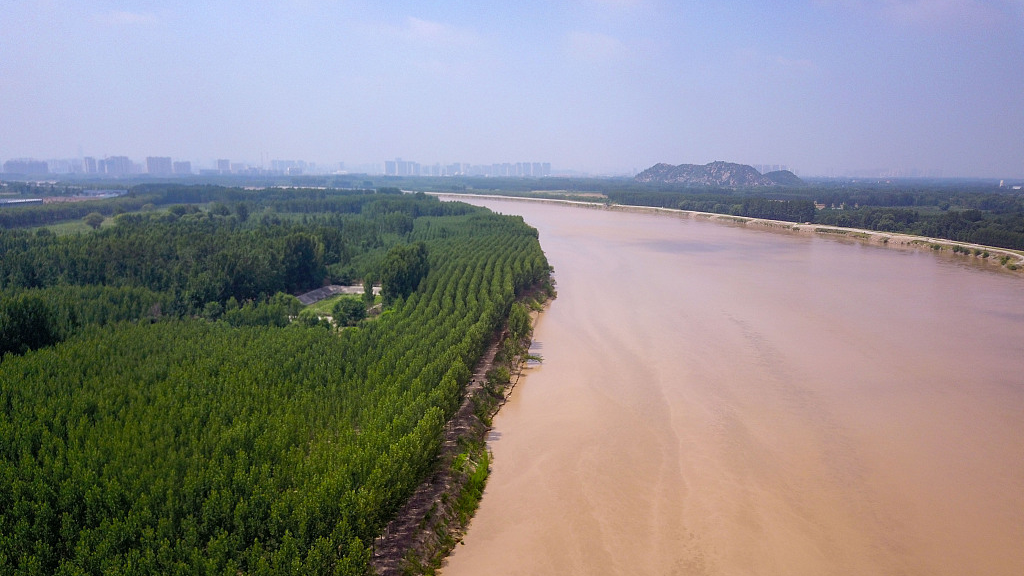China on Wednesday launched a 20-day water-sediment regulation operation to wash away excess mud from the Yellow River, the second longest river in the country, by coordinating the discharge of water in several major reservoirs on the river to form massive water currents to carry river-bed sediment into the sea, according to an announcement issued by the Ministry of Water Resources.
Each year, the Yellow River carries 1.6 billion tonnes of fine sediment (loess) when its middle reaches flows through China's Loess Plateau region. It carries more sediment per cubic meter than any other major river in the world, and deposits most of it long before it reaches the delta. The large amount of mud and sand discharged into the river makes the Yellow River the most sediment-laden river in the world.

The Xiaolangdi Reservoir in central China's Henan Province coordinated in discharging water to wash away the sediment on Wednesday. /CFP
The Xiaolangdi Reservoir in central China's Henan Province coordinated in discharging water to wash away the sediment on Wednesday. /CFP
During the water-sediment regulation operation, three major reservoirs on the middle reaches of the Yellow River, namely the Wanjiazhai, the Sanmenxia and the Xiaolangdi, will be coordinated in discharging water to wash away the sediment in the river before the arrival of the flood season.
The water discharge from the three gates of the Xiaolangdi started at 9 a.m. on Wednesday. By the time the sand-washing operation finishes, over 80 million tons of mud and sand is expected to be washed away.
Every year ahead of the flood season, the Ministry of Water Resources will coordinate the three reservoirs in regulating the water runoff. An "artificial flood peak" will then take place to carry away the sediment in the reservoir and on the river bed.
"After the launch of the water and sediment regulating operation, the Xiaolangdi Reservoir will discharge a large amount of water to wash away the sediment in the lower reaches of the Yellow River. When the water level of the reservoir is lowered to the intended level, the Wanjiazhai, Sanmenxia and other reservoirs on the river will take over the water discharge and sweep the sediment out of the Xiaolangdi," said Li Rongrong, deputy director of the hydrology and sediment department under the Yellow River Survey, Planning and Design Research Institute.

View of the Yellow River in Jinan City, east China's Shandong Province. /CFP
View of the Yellow River in Jinan City, east China's Shandong Province. /CFP
The Yellow River Conservancy Commission under the Ministry of Water Resources held a trial run of the operation this year.
"Compared with previous years, so far this year, we have further optimized the indicators of the water and sediment regulation and strive to discharge more mud from reservoirs and wash away more mud through river channels. We are monitoring the impact of the operation on aquatic organisms for the first time and taking measures to minimize the impact on aquatic organisms and their habitats. We will also strengthen ecological restoration of the Yellow River Delta and protect biodiversity of the river basin," said Ren Wei, head of the planning and technology division of the Natural Disaster Prevention Bureau under the Yellow River Conservancy Commission.
Thanks to years of water and sediment regulation, the sediment situation in the lower reaches of the Yellow River has been greatly improved, with flood-discharge capacity enhanced and loss of floodplains reduced.
(If you have specific expertise and want to contribute, or if you have a topic of interest that you'd like to share with us, please email us at nature@cgtn.com.)